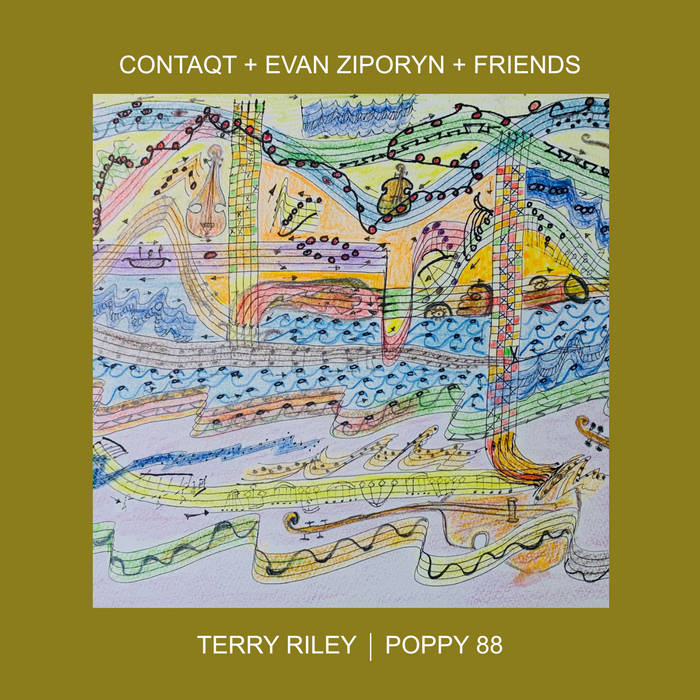Evan Ziporyn and ContaQt congratulate Terry Riley on his 89th birthday, releasing “Poppy 88”, based on “Poppy Nogood and the Phantom Band”.
A year ago now, on 24 June 2023, on the occasion of Terry Riley’s eighty-eighth birthday, the CAST (Center for Arts, Sciences and Technology) at the prestigious MIT (Massachusetts Institute of Technology) and the chamber ensemble ContaQt organised a kind of surprise birthday party that had a worldwide impact: 88 of today’s most talented musicians from almost all over the world – in sixty cities in twenty-three countries, from Athens to Raufarhöfn in northeast Iceland, plus Berlin, Brussels, Dublin, Istanbul, New York, Pretoria, São Paulo, San Francisco, Tokyo, Toronto and Warsaw, among many other places… -, Among them were Maya Beiser, Sarah Cahill, Claire Chase, Gloria Cheng, Julian Coryell, Dennis Russell Davies, Paul Dresher, Arnold Dreyblatt, Victor Gama, Lihi Haruvi, Colin Jacobsen, Joan Jeanrenaud, Katrina Krimsky, Jaron Lanier, Maki Namekawa, John Oswald, Kala Ramnath, Robert Rich, Paulo Santos, Tracy Silverman, Vân-Ánh Võ, among others, as well as Gyan Riley, Terry Riley’s son, or the five members of ContaQt, Mary-Katherine Finch, Jerry Pergolesi, Allison Wiebe, Sarah Fraser Raff and Andrew Noseworthy (but no Spaniard either), came together telematically in an unforgettable virtual concert to pay homage to the legendary minimalist composer, performing Poppy 88, a collective composition arranged by the director of MIT CAST, American composer and clarinetist Evan Ziporyn, based on Poppy Nogood and the Phantom Band, a piece included in Riley’s 1967 masterpiece, A Rainbow in Curved Air, his third album.
A year later, on Riley’s 89th birthday, the Canadian label People Places Records releases the piece, just over thirty minutes long, very much in the vein of Terry Riley’s original piece, which used tape loops to generate the different layers of melody – the “phantom band” alluded to in the composition’s title. Without prior rehearsal, the musicians were able to circumvent the inherent limitations of audio transmission – both physical distance and varying data rates – to create these new complex layers of textures.
